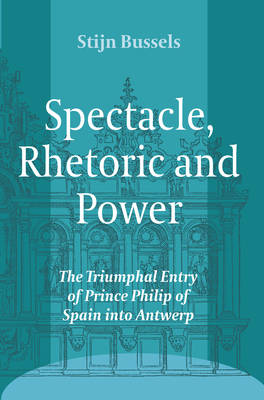
- Afhalen na 1 uur in een winkel met voorraad
- Gratis thuislevering in België vanaf € 30
- Ruim aanbod met 7 miljoen producten
- Afhalen na 1 uur in een winkel met voorraad
- Gratis thuislevering in België vanaf € 30
- Ruim aanbod met 7 miljoen producten
Zoeken
€ 142,95
+ 285 punten
Omschrijving
In 1549, Prince Philip of Spain made his entry into Antwerp together with his father, Emperor Charles V. For this occasion the rich city of commerce was transformed into a large theatrical space with triumphal arches and tableaux vivants as stage settings. The citizens and the princes acted as actors in a splendid parade, a battle array of four thousand participants, impressive tournaments and a huge firework display. This resulted in one of the most expensive and impressive festivities of the early modern period.The organizing municipality drew on various theatrical genres in an effort to bring about a renewal in the existing power relations between the Habsburg rulers and themselves, as well as the relations of the rulers with the population. Exactly how the city and the monarch were depicted was illustrative of the precious balance of power between the Habsburgs and the city fathers and of both parties toward their respective subjects. How these power relations were precisely staged in Antwerp is studied in this book.
Specificaties
Betrokkenen
- Auteur(s):
- Uitgeverij:
Inhoud
- Aantal bladzijden:
- 260
- Taal:
- Engels
- Reeks:
- Reeksnummer:
- nr. 11
Eigenschappen
- Productcode (EAN):
- 9789042034716
- Verschijningsdatum:
- 1/01/2012
- Uitvoering:
- Paperback
- Formaat:
- Trade paperback (VS)
- Afmetingen:
- 155 mm x 234 mm
- Gewicht:
- 367 g

Alleen bij Standaard Boekhandel
+ 285 punten op je klantenkaart van Standaard Boekhandel
Beoordelingen
We publiceren alleen reviews die voldoen aan de voorwaarden voor reviews. Bekijk onze voorwaarden voor reviews.








